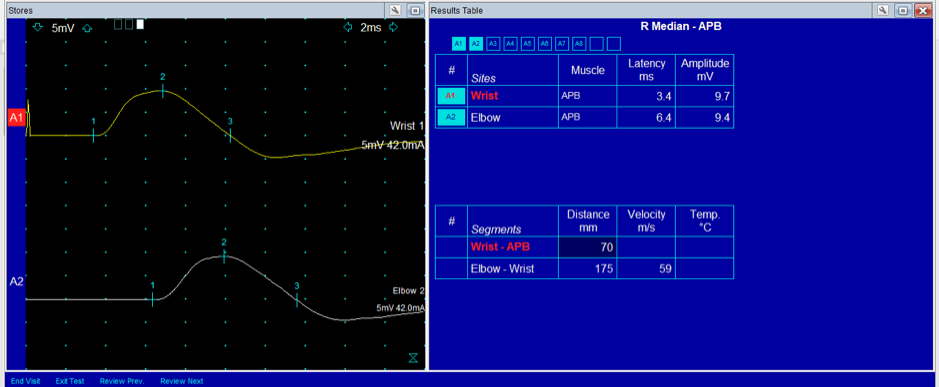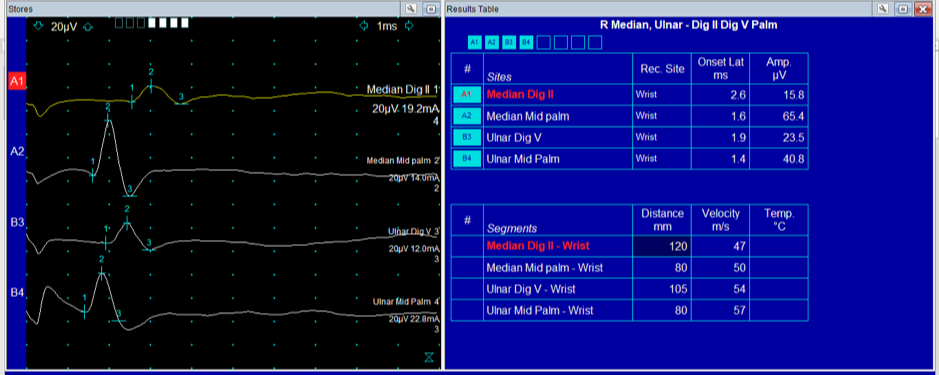Nerve Conduction Studies
Nerve conduction studies (NCS) and Electromyography (EMG) examination of muscles evaluate the function of rapidly conducting motor and sensory fibres. Nerve conduction and EMG studies are performed in conjunction with the Neurologist’s examination.
Recording electrodes are placed over the muscle. The nerve is then stimulated producing a compound motor action potential (CMAP).
The latency is the time from the stimulus to the onset of the potential. When the nerve is stimulated more proximally, a longer latency is recorded. From the proximal and distal latencies and the distance between the two stimulation sites, the motor conduction velocity of the nerve can be calculated. Slowing of the motor conduction velocity is caused by demyelination of the motor nerve fibres. A reduced amplitude may indicate axonal problems.
When a purely sensory nerve is studied, the nerve is stimulated at one site while a compound sensory nerve action potential (SNAP) is recorded from another point in the nerve. By measuring the latency of the SNAP and the distance between the stimulating and recording sites, the sensory conduction velocity can be calculated. Conditions that cause demyelination of the sensory nerve fibres will produce a slowed sensory conduction velocity.
Electromyography
Needle electromyography consists of inserting a needle electrode into a muscle and evaluating the electrical activity when the muscle is fully relaxed and then during voluntary contraction.
A healthy muscle at rest is electrically silent. After nerve injury, when the nerve axons have been disrupted, the denervated muscle fibres become spontaneously active producing fibrillation potentials and positive sharp waves. During voluntary contraction, the electrical activity of the muscle fibres close to the needle electrode combines to produce motor unit potentials having characteristic waveforms, amplitudes and discharge frequencies. These characteristics are altered with muscle disorders and neuropathies.
Here is an example of a nerve conduction study.
Compound Muscle Action Potential

Sensory Nerve Action Potential


